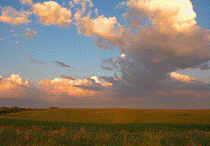
Proceedings of the North American Prairie Conferences
Date of this Version
2004
Document Type
Article
Abstract
Can mapping past and current changes in prairie landscapes in relation to historical shifts in human culture suggest promising directions for efforts to restore the health of grasslands and other natural communities? During the last 20,000 years the Land shifted and altered; during the past 10,000 years Life moved and migrated; and during the past 5,000 years natural and human Law has been turned and twisted to produce changes unanticipated in the history of the world. In the past 500 years these changes have quickened as we have changed ourselves from foragers into fur traders, and then into farmers, foresters, financiers and finally into fun~seekers, overrunning the Land and other Life. As our contact and connection with the Land has become more specialized and more distant, as the balance and integrity of the Land continues to fragment, our own health and happiness declines as family life deteriorates. Is there a way to transform our current destructive use into efforts that are more creatively restorative? In the last few decades we have concerned ourselves with the basic problem of the unavoidable effects of human population density (e.g., habitat loss and global warming), the critical challenge of how we partner and to what we become attached (e.g., cars as opposed to walking), and an appreciation of the power of group consensus and action (preserving ecologies as opposed to oil exploration). Can we shift our perceptions in ways that benefit natural communities? Conceptual schemes used in the natural sciences to organize understanding of the relations among species and habitats have not been integrated with sophisticated conceptualizations used in the psychological and social sciences that might better define threats to natural communities posed by human motivations and activities. When human population densities, movements, and activities are considered in such an integrated manner, the social potential for restoration efforts may be enhanced in powerful ways. This paper explores change as disturbance by proposing a comprehensive mapping of conditions, connections, communities and contexts affecting both grasslands and families. It offers specific suggestions to counter the destruction of healthy grassland and family systems by strengthening their positive relations with one another. The primary proposition is that families are the basic unit of care and connection in our communities. If family life is the primary relational process that determines and transmits our most valued participations in natural communities across generations through children, then perhaps we must re-balance our efforts, shifting a substantial portion of our focus upon individuals and groups toward child, couple-centered, and family centered relations with the Land that are intergenerationally sustainable. Perhaps it is possible that connecting with and caring for the Land can uncover greater connection and caring for one another, especially within the context of family, school, and neighborhood life.


Comments
Published in Dave Egan & John A. Harrington, editors, Proceedings of the 19th North American Prairie Conference: The Conservation Legacy Lives On..., University of Wisconsin-Madison, August 8-12, 2004 (Proceedings of the North American Prairie Conference, 19), Madison, WI: University of Wisconsin-Madison, 2004.